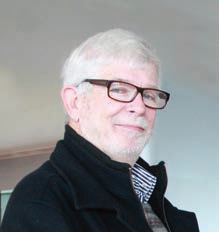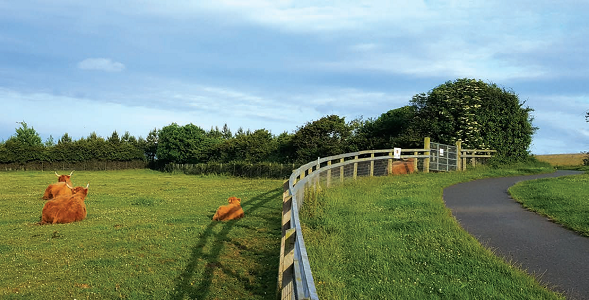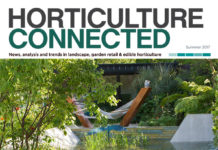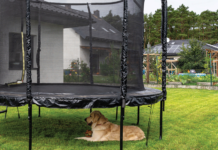Pat Suttle of KS Agronomy and Capital Sports discusses some of the values and challenges of alternative grassland maintenance regimes
When installing an area of grass it is important to think carefully about what you are trying to achieve and how the area will be maintained in the long term. Grasslands will often be well designed, specified and constructed, and then fall apart after installation. They are an integral part of the fabric of our cities, towns, villages and the wider landscape and provide functions as diverse as leisure, biodiversity, farming, recreation, sports, greenbelts, buffers, accents and verges.
Costs associated with their maintenance can be significant for local councils and landowners, and much research and experimentation has taken place over the last 10 years to see how these costs can be reduced. While the vast majority of new build developments are transferred over to management companies there are still swathes of grass under the control of local councils, who are under intense pressure to reduce costs. Some of the approaches being taken include reduced mowing regimes, the use of grazers or suitable ground covers and where achievable, native and pictorial flower meadows.
GRASSLAND FOR OLD HARDY CATTLE BREEDS AND GEESE
Living in Portmarnock, Co Dublin, which is within Fingal County Council catchment area, I have witnessed first-hand and supported a variety of mowing initiatives. We have two
publicly owned areas nearby which are grazed by Highland cattle and they are a great attraction for people driving by or out for a walk. Adjacent to the grazing area is a large greenbelt which is partially mown once a year and the mowings are baled for use as cattle feed. Portmarnock is also home to both a Special Areas of Conservation (SAC) and a Special Protection Areas (SPA), which are home to many winter visiting birds including huge numbers of Brent geese. They occupy a large green space and graze the grassland from October/November through to March/April each year. In recent years I have noticed
that the deteriorated grass cover in the geese grazed area has been replaced by broadleaved plants – all the wildflowers you would expect to find in low nutrient grassland. The areas are very attractive with plants in flower throughout the spring and summer, but they may not be achieving their aim of providing space and food for the grazing animals. This presents a challenge and applications of low amounts of nutrients may be required to maintain sufficient grass cover to feed the geese, while still allowing the nutrient status to remain low enough to accommodate the wildflowers.
CATERING FOR PUBLIC AND GRAZING NEEDS
To maintain good grass cover for grazing, levels of phosphorus should be maintained at about 3mgs per litre and the potassium levels at or above 100mg per litre. At these levels it would be likely that nitrogen applications of about 30kg per hectare would produce sufficient forage for the cattle and the geese. However, it would result in a species poor area. To bring plant diversity into the sward, it would be necessary to allow the phosphorus level to drop down towards 2mgs per litre and the potassium levels down towards 40mg per litre. To achieve this reduction in nutrient levels relatively quickly it would be necessary to harvest grass off the area in the form of hay or silage for two to three years.
Once a species rich grassland has been achieved it is likely that approximately 10kg nitrogen, 2kg phosphorus, and 6kg potassium per hectare might be sufficient to maintain

a reasonable amount of grass cover for small cattle at low stocking rates and flocks of geese without reducing the number of wildflower species. Timing the nutrient applications would be important. Cattle are present all year round so the nutrients can be applied in March whereas the geese who are winter visitors would benefit from nutrient applications in August/September.
THE ARGUMENT FOR NUTRIENT APPLICATION
In urban or near urban areas, another good reason to apply nutrients to grazing areas is that it will attract the geese and keep them away from football pitches (where nutrients are applied in autumn to encourage recovery of the grass after wear). The aforementioned grazed area in Portmarnock sits right beside two football clubs. Remember, geese are not stupid. They fly over the area and land to feed on the greenest and sweetest grass. In recent times visiting football teams in North Dublin have refused to play on pitches covered in goose droppings. Adding nutrients in some areas can also contribute to biodiversity creation. In my own area I have seen huge increases in cowslips and orchids.
BALANCING PUBLIC OPINION
It has been interesting to see public reaction to changing mowing practices over the last decade. As with most things, it’s mixed. For the most part people have welcomed changes and the subtle use of mown edges around longer grass plays a significant role in mediating negative opinion. The legacy of the mown expanse of the English parks movement is slowly dissipating. But it’s still there and manifests itself in complaints about untidiness. There are also those who object on the basis of pollen increase. I’ve even heard complaints about children coming into contact with insects! But then Rome wasn’t mown in a day. We are heading in the right direction and if the long term benefits are communicated, people will eventually get on board.
SUMMARY
To achieve biodiversity soil nutrient levels need to be low. Take a soil test for phosphorus, potassium and pH and send it to a soil testing laboratory. If the nutrient levels are high, cut and harvest the grass. Retest the soil the following year. Once the levels are low enough diversity in the plant cover will occur naturally. This can be accelerated by drilling wildflower seed into the soil.
To maintain for low level grazing small amounts of nutrients are required every one to two years to replace those taken away by the grazers. ✽

PAT SUTTLE has a horticultural degree from UCD. He is also an agronomist working with KS Agronomy, which provides consultancy services for all types of sportsturf facilities. Pat spent much of his career lecturing in turfgrass and soil science at Teagasc Botanic Gardens, and at Kinsealy Research Centre. He also managed the greenkeeper training programme and a sportsturf consultancy service in Teagasc, and has recently joined the multidisciplinary team at Capital Sports.







